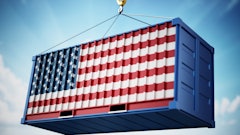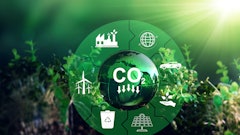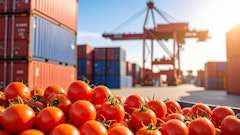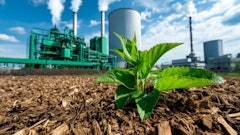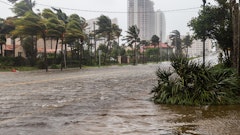In early February, the U.S. Department of Agriculture (USDA) released a report on climate change and agriculture that painted an ominous picture of what food production in the future would look like due to the effects of greenhouse gas emissions. The agency’s report, Climate Change and Agriculture in the United States: Effects and Adaptation, was unrelenting.
“Climate change poses unprecedented challenges to U.S. agriculture because of the sensitivity of agriculture productivity and costs to changing climate conditions,” warned the USDA, and there’s not one region of the globe that can escape what’s coming.
New stressors on the planet, plants and livestock
On the weather front the U.S. and other countries are facing rising temperatures, variable precipitation and water shortages, more frequent and extreme weather events, such as drought, and changing levels of CO2 and solar radiation in the atmosphere. According to the USDA, “About 80 percent of agricultural land experienced drought in 2012, which made the 2012 drought more extensive than any since the 1950s.” Major field crops in the Midwest, particularly corn and soybeans, were destroyed or damaged. In response, food prices began rising in late 2012, and consumers are expected to feel the full brunt throughout 2013.
Meanwhile, the impact on plants and livestock will be manifold. Environmental changes will adversely affect the health and productivity of livestock, while agricultural goods will suffer from a proliferation of disease, weeds and pests. Negative changes to the soil and water, fertilization and pollination will also occur. Moreover, the rate at which greenhouse gases are being emitted means the pace and effects of climate change are growing exponentially.
Simply put, our highly fragile and complex ecosystem and the plant and animal life it supports is at serious risk.
Coincidentally, just days before the release of the USDA’s report, the New England Fisheries Management Council voted in favor of cutting cod quotas for the Gulf of Maine by 77 percent, essentially wiping out a generations-old way of life for thousands of New England fishermen and those employed in related industries.
“The impact will be severe,” admitted John Bullard, the regional administrator of the National Oceanic and Atmospheric Administration, in an interview with CNN.
Cultural, social and dietary changes
Imports and exports of agricultural commodities and food products are growing not only in the U.S., but emerging middle classes in the developing world are stretching food supply chains—including shipments of fresh fruits and vegetables, meat, poultry and seafood, and all types of processed food products—further every day.
At the same time, well-known restaurant chains and brands are making their way into every corner of the world. M.H. Alshaya Company, based in Kuwait, has 70 brands in its portfolio that it is aggressively positioning throughout the Middle East and other regions. To put it mildly, chains such as Starbucks, IHOP, and Cheesecake Factory are red hot overseas, according to a recent Fortune magazine article. For instance, three of P.F. Chang’s top 10 restaurants are in the Middle East and other chains are seeing similar enthusiasm throughout the region.
Cheesecake Factory CEO David Overton, famous for his exacting standards, signed a deal with Alshaya in 2011 to open 22 restaurants in the region over a five-year period. The Cheesecake Factory is an interesting case study on several levels. Although Middle Easterners are clearly attracted to the chain for its reputation in providing patrons with a consistent dining experience from the service to the actual food, strict Islamic dietary laws relating to halal guidelines require many dishes to undergo minor to moderate adjustments. In addition, many of the ingredients for the restaurant’s dishes are imported from the U.S., and anything that misses the boat or plane, or gets held up in customs, results in changes to the menu, which the Cheesecake Factory tries hard to avoid.
Yet, “Sourcing will only become more complicated as the restaurant chain’s expansion continues,” states the article. “Lebanon, for example, requires that imported products come directly from their country of origin; if the Cheesecake Factory uses shrimp from Mexico, the shellfish must come to Lebanon directly from Mexico.”
In the U.S., the food supply chain is under pressure to deliver fresher, healthier food in greater quantities. More shopping is also taking place online, notes Elliott Grant, CTO and founder of HarvestMark.
“Millennials are more likely to shop through a variety of channels—and they aren’t going to drive to a store just to stand in line; they will happily shop online to get the choices they want and wait for a delivery tomorrow. Currently, bricks-and-mortar retailers carry a few thousand fresh produce SKUs in their stores. Online grocers could carry 100,000,” he writes in Fresh Produce 2020: How four forces are creating unprecedented opportunities for value creation and capture in the fresh produce industry.
And while food supply chains are getting longer and more complex, they are also getting shorter and simpler in some respects. A recent survey by consultancy A.T. Kearney found that 70 percent of shoppers polled are willing to pay more for locally sourced food based on their desire to “buy local” and support environmental sustainability. Nearly 30 percent said they would consider switching stores if locally produced food was not offered. Those surveyed also indicated that they would spend more for locally produced food if grocers provided better education on the origin of the food.
An intelligent response
Few would argue that a measured and meaningful reduction in greenhouse gas emissions is absolutely necessary in order to feed the planet in the coming years. At the same time, the food industry and various agencies are mobilizing to address the many challenges, whether it’s how to reliably and sustainably produce more food and/or to reduce food waste.
In 2007, General Mills launched the General Mills Worldwide Innovation Network (G-WIN) to encourage collaboration between other food companies and the academic community to address threats to natural resources (water, arable land and energy) as well as food safety and food waste. Jeff Bellairs, senior director of G-WIN, has been helping to promote the group’s agenda via the press and speaking engagements, most recently at the Food Vision conference in Cannes, France this month.
At a U.S. State Department conference this year, attendees from the federal government, non-government organizations and the private sector gathered to discuss ways to fight post-harvest food loss in developing markets. Jose Fernandez, Assistant Secretary of State in the Bureau of Economic and Business Affairs, highlighted the success of the U.S. Agency for International Development’s (USAID) “Feed the Future” program in Rwanda, which was instrumental in establishing a massive storage facility in that country that will help reduce post-harvest losses in beans and maize. In addition, a State Department grant was awarded to a U.S.-India partnership for solar powered refrigerated storage vehicles. This was an important development considering that India’s poor cold chain infrastructure leads to spoilage rates of up to 18 percent for fresh produce. USAID is also working with food company Land O’Lakes to assist dairy cooperatives in Uganda to become more competitive.
Technology is playing a bigger role in food production, too. The Dutch company TerraSphere uses satellite and UAV (unmanned aerial vehicle) imagery to give farmers detailed information on their crops, which can be used to make precise decisions regarding the application of fertilizers and pesticides.
Throughout the developed world, more attention is being spent on issues such as reducing food waste with smart labels that monitor freshness, better packaging, portion control and overconsumption by consumers, and more responsible merchandising by grocers.
There have also been radical advancements related to food production. For example, San Francisco-based startup Hampton Creek Foods is attracting some high-profile interest from Silicon Valley venture capitalists, and even Microsoft’s Bill Gates, over the company’s Beyond Eggs product. The non-dairy egg substitute is made of plants, is about 19 percent cheaper than eggs, has a longer shelf life and is safer for consumers than the real thing. Most importantly, it consistently passes the taste test among those who try it.
Plant-based proteins can eventually give their conventional counterparts a run for their money not only in the U.S. and other industrialized economies, but in emerging economies too that are looking for cheap, efficient ways to feed growing populations.
As it turns out, plant-based food is also the way to go for salmon farming. Instead of feeding salmon food made from forage fish like anchovies, herring and sardines, Verlasso, a joint venture between DuPont and AquaChile, is using a plant-based alternative.
In a recent GreenBiz.com blog, journalist Marc Gunther explains that it takes four pounds of feeder fish to produce one pound of farm-raised salmon, which ends up introducing a new stress on the ocean’s wild fish stock. Verlasso uses genetically engineered yeast instead. It costs more, but it seems consumers are willing to pay for it.
DuPont polled consumers to find out if they would pay a premium for more sustainably produced salmon. Scott Nichols, the director of Verlasso told Gunther that not only were consumers agreeable to paying more, “there was a cohort of consumers who were enthusiastic about it.”
Meanwhile, Rob Byrne, CEO of Terra Technology, believes better inventory management can go a long way in reducing a supply chain’s impact on the planet’s natural resources. Although reducing the carbon and water footprint of the transportation side of the business is important, the focus should really be on reducing inventory, he says.
According to Byrne, the amount of carbon and water embodied in the estimated $8 trillion of global inventory equals about 11 percent of the total annual global carbon emissions and 40 percent of global water use. Furthermore, inaccurate forecasting is responsible for much of the excess inventory that companies are holding and it translates to an enormous environmental and financial burden, says Byrne.
Procter & Gamble, a Terra Technology client, has taken over $1 billion in inventory out of its supply chain over the last two or three years. In January, Terra Technology launched an online Sustainability Calculator to help companies measure the impact of their inventory on the planet. The free tool is available at www.terratechnolgy.com/sustaina











